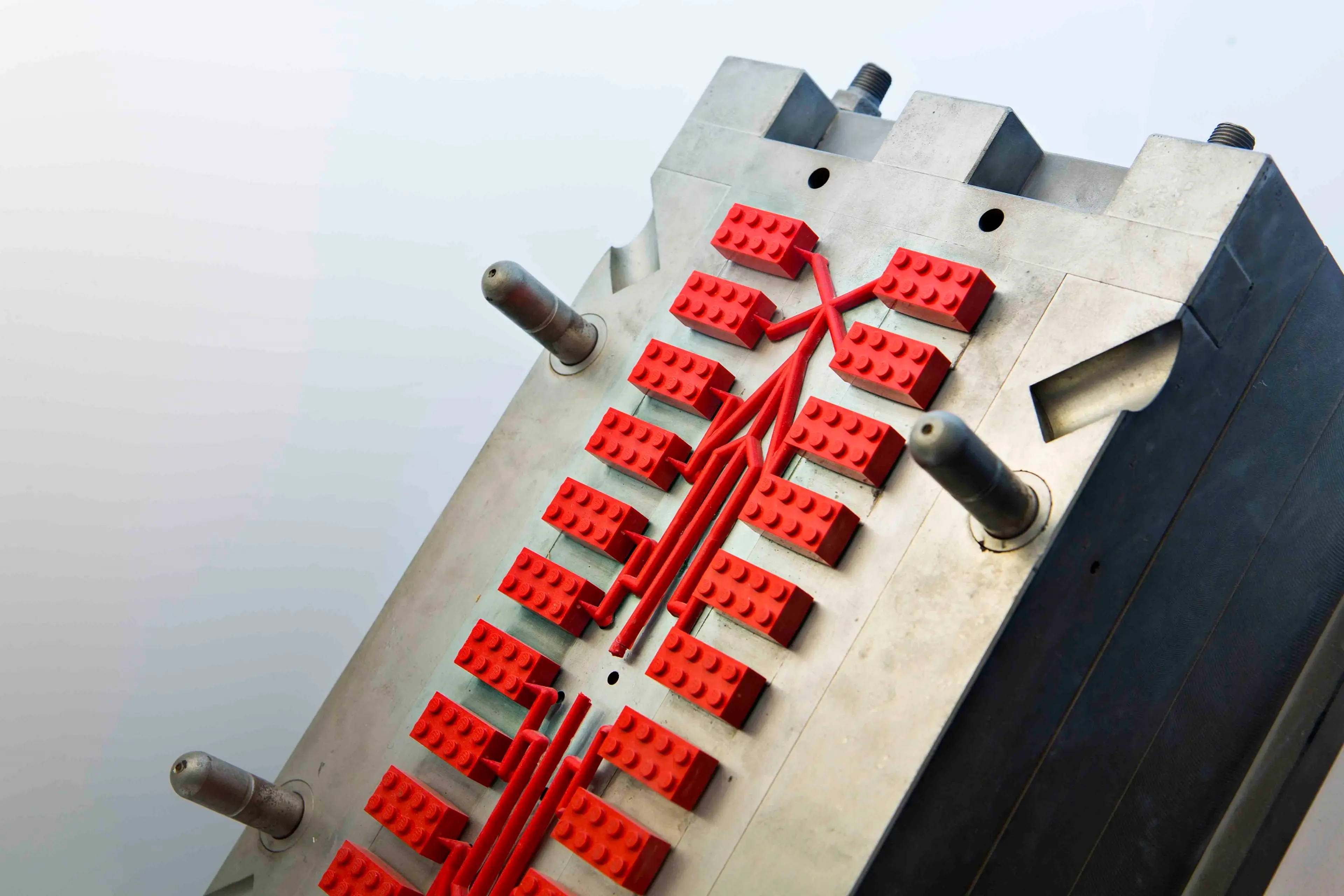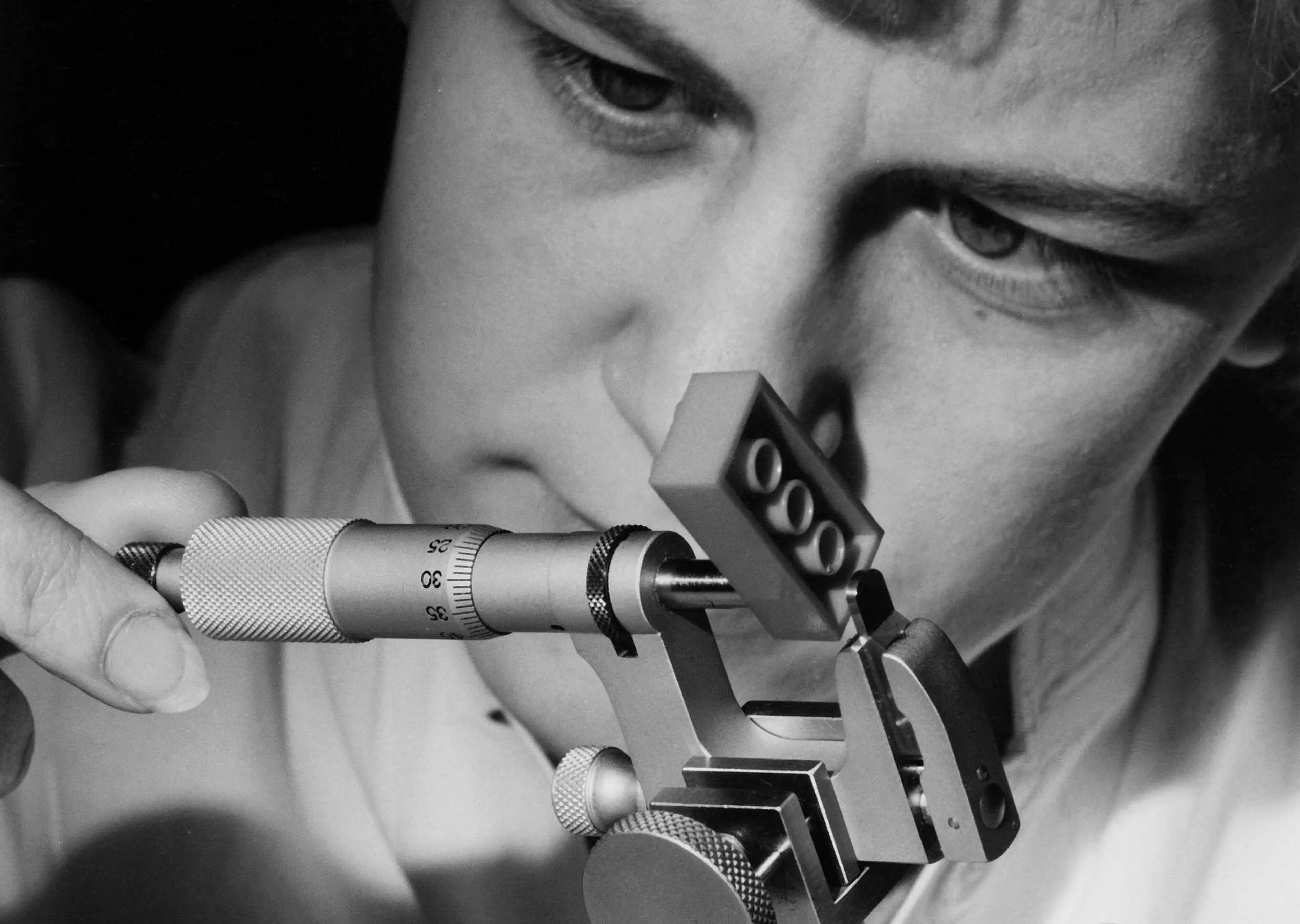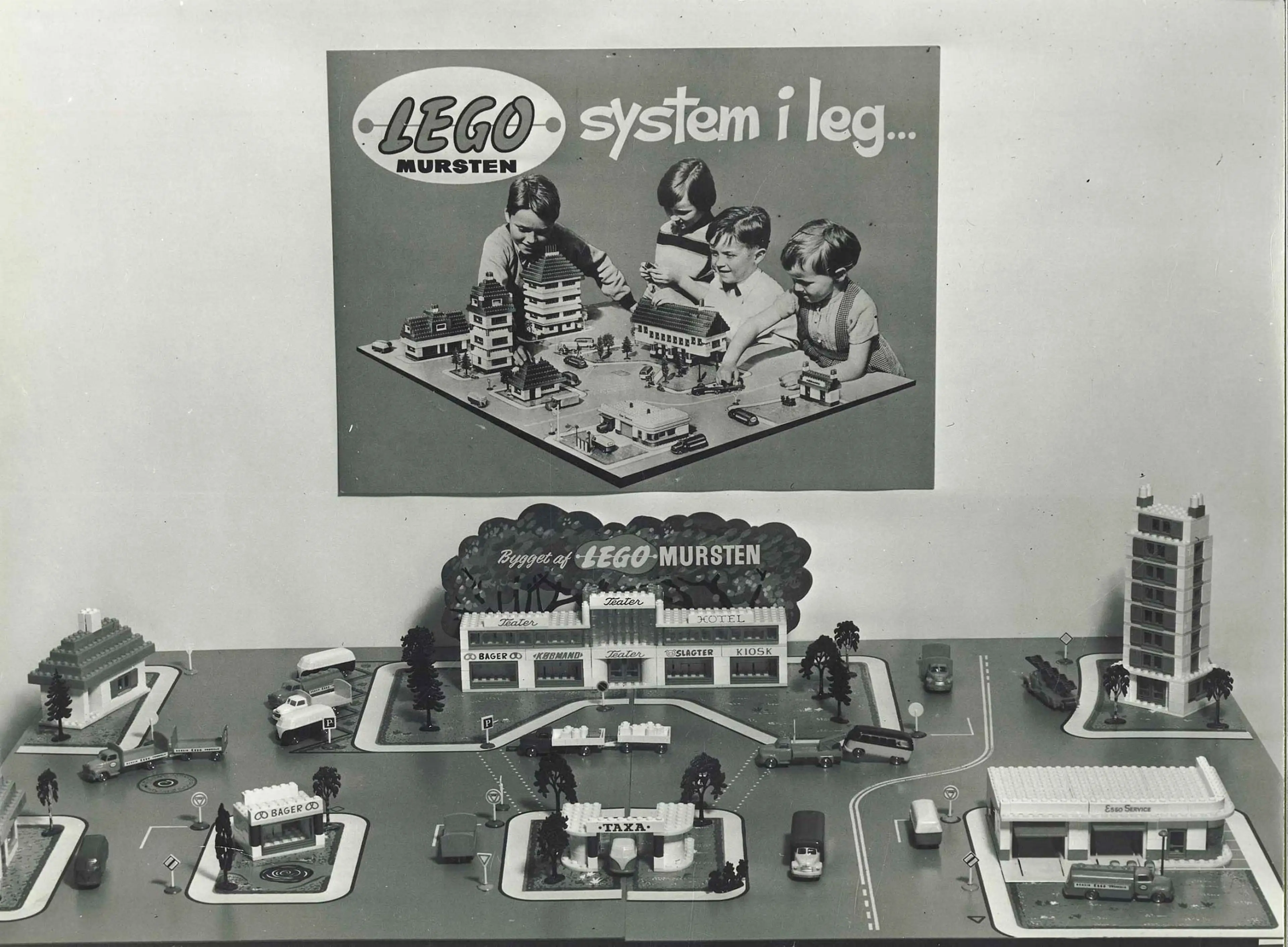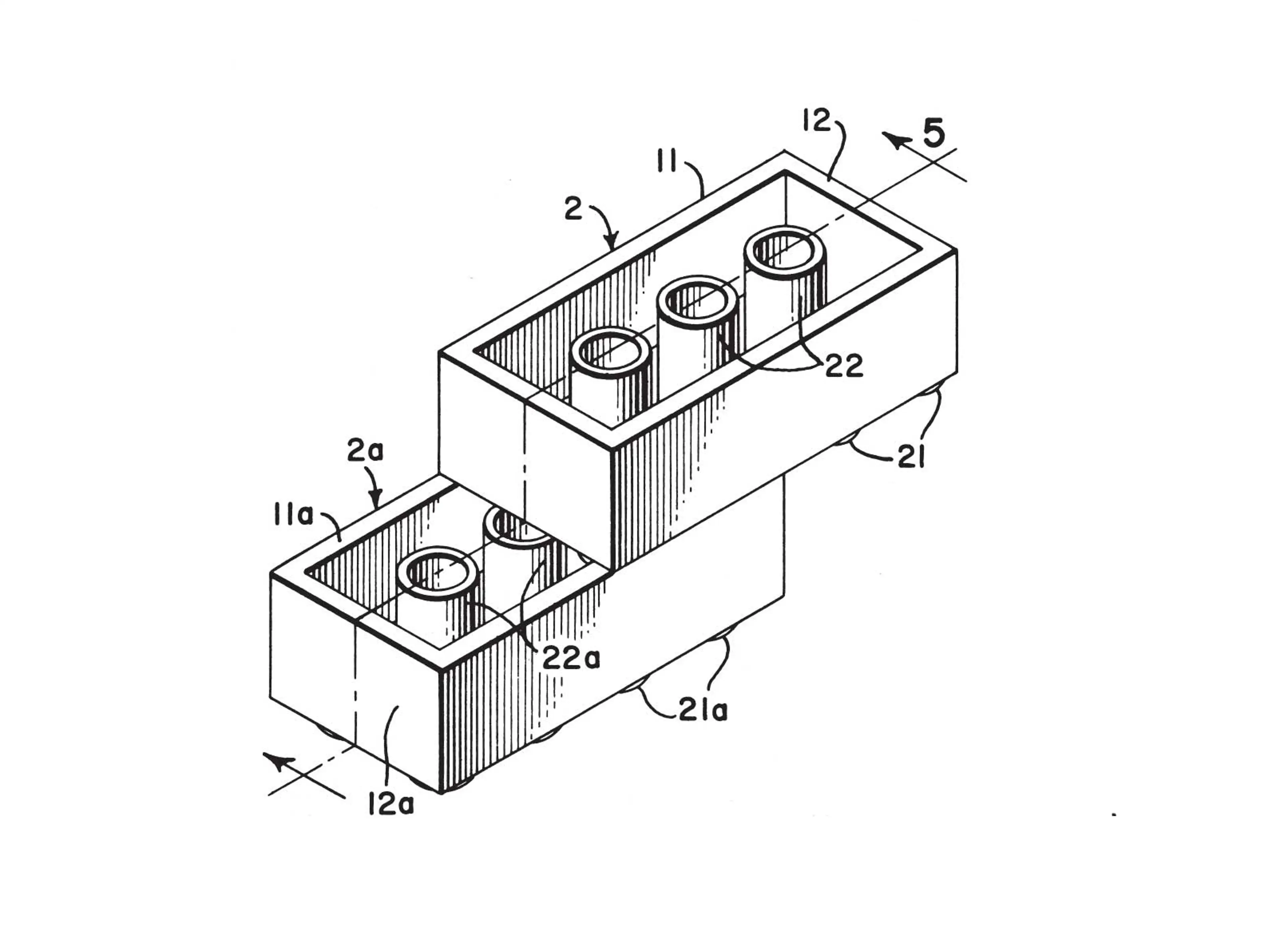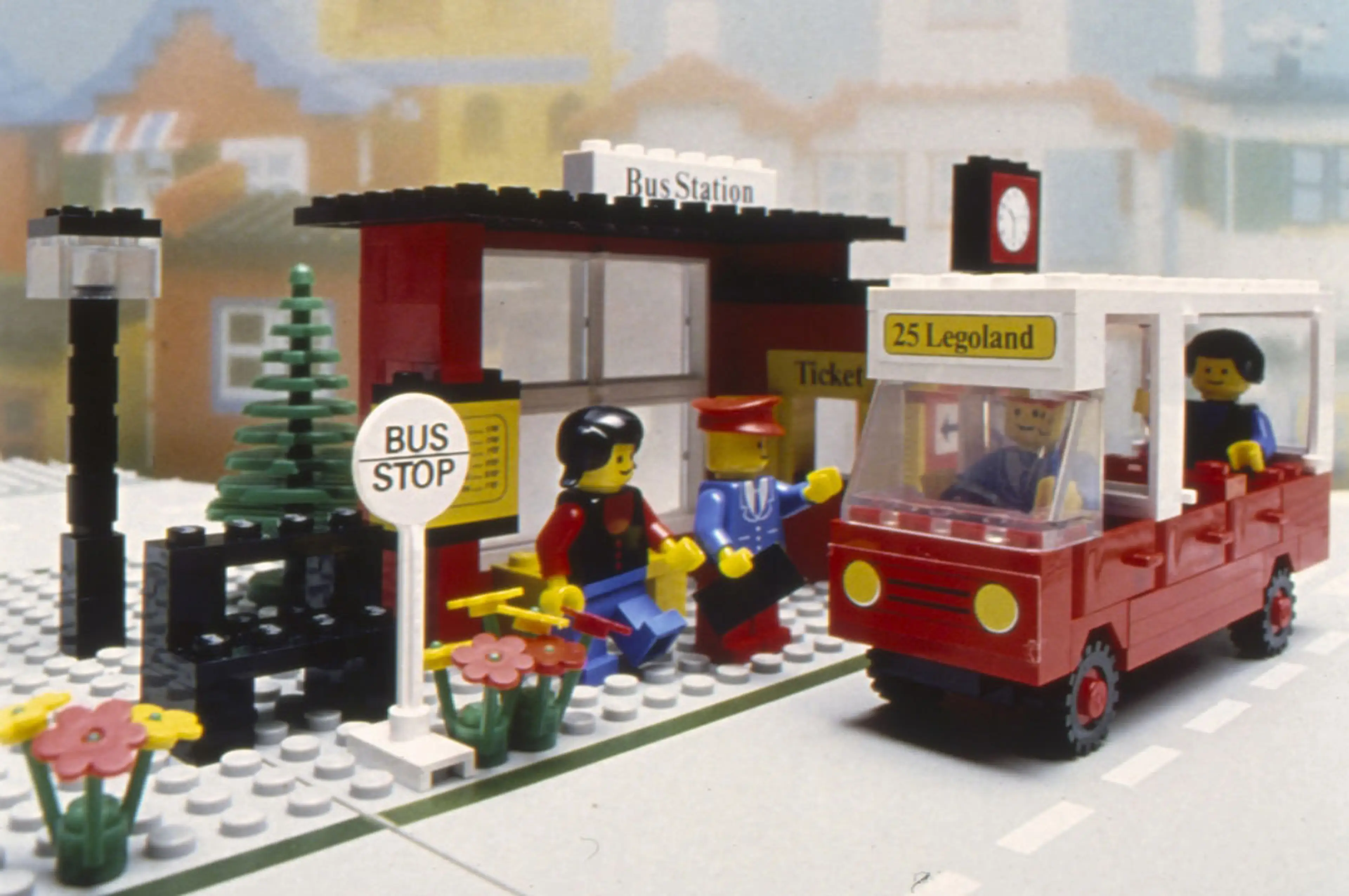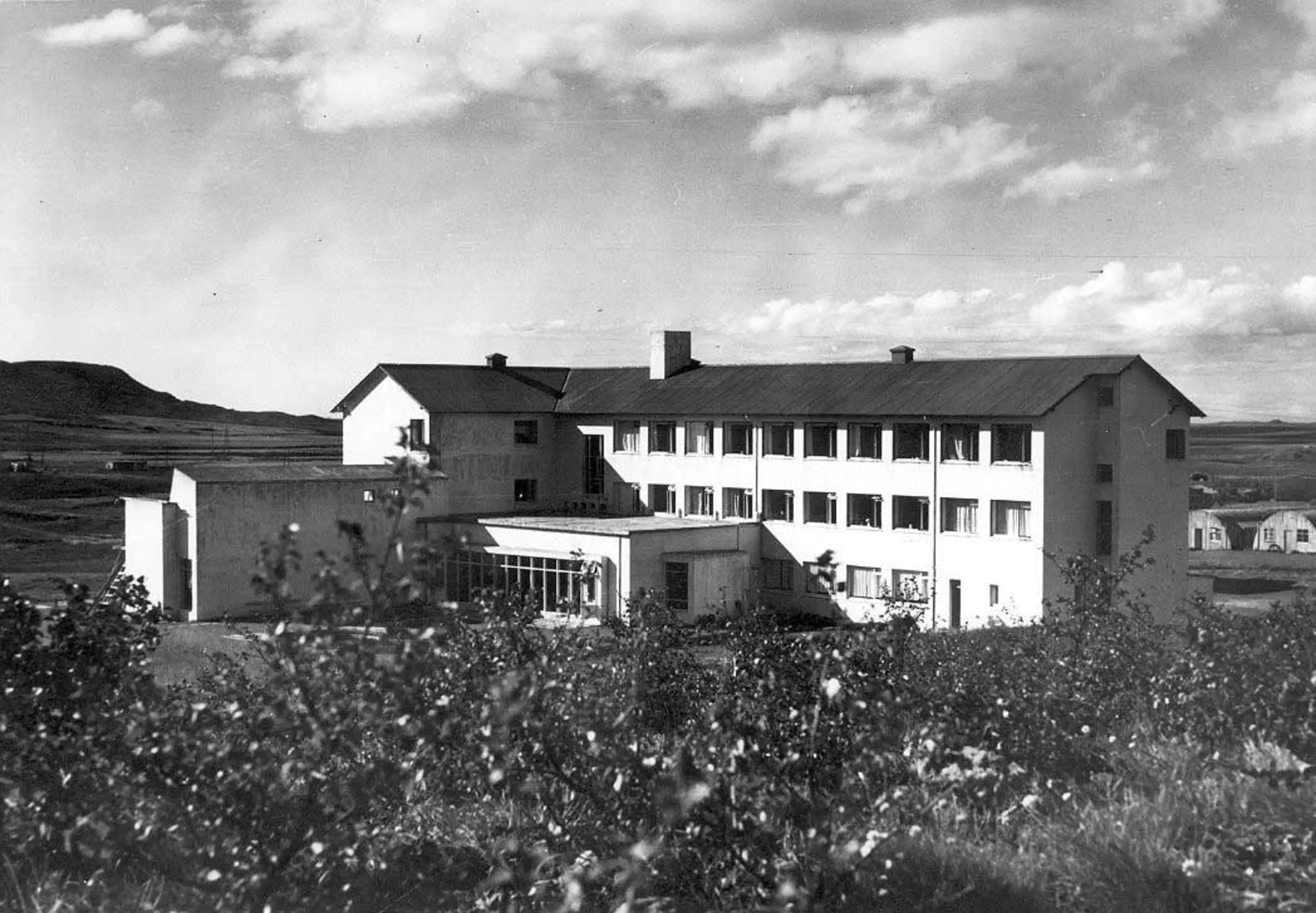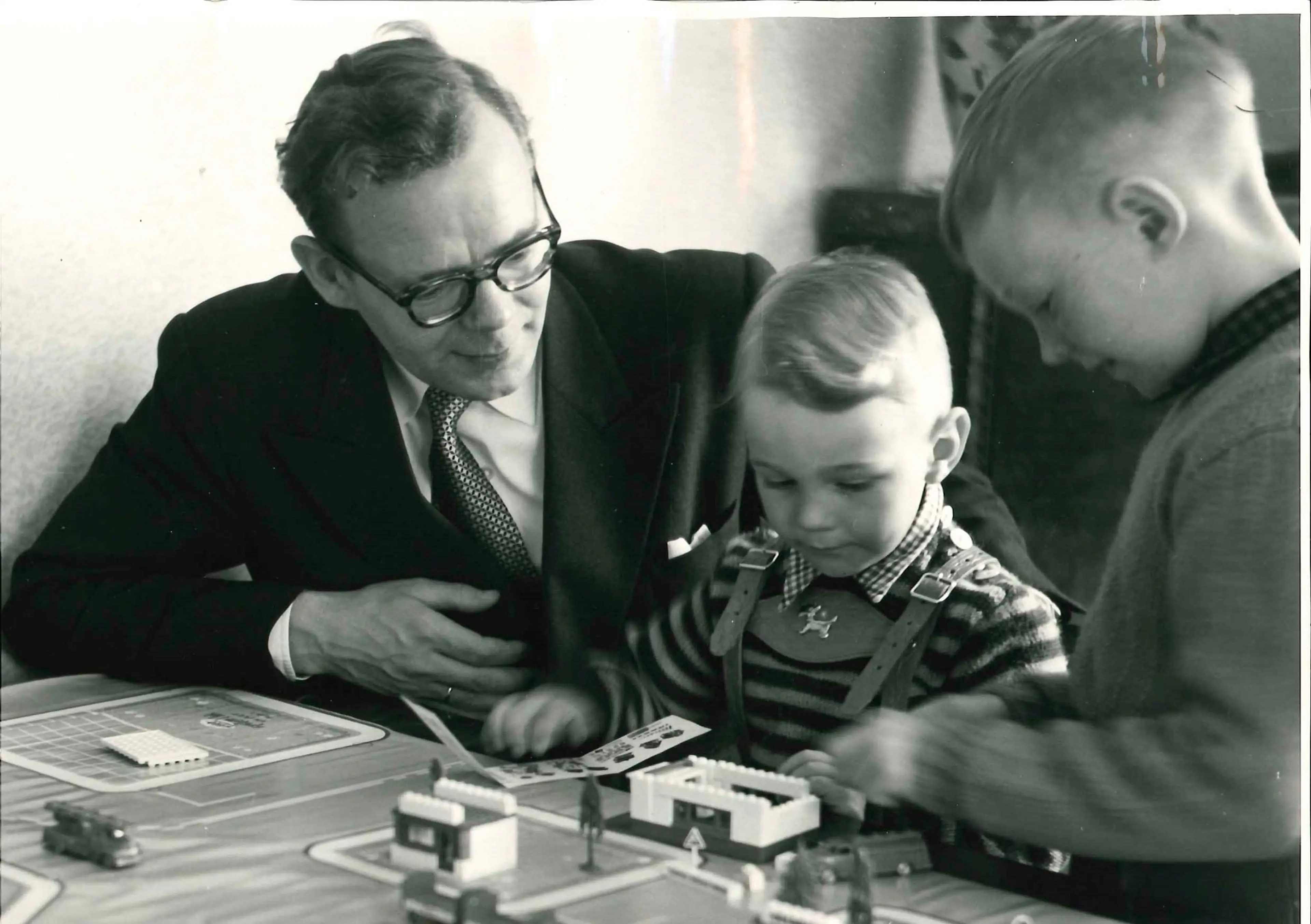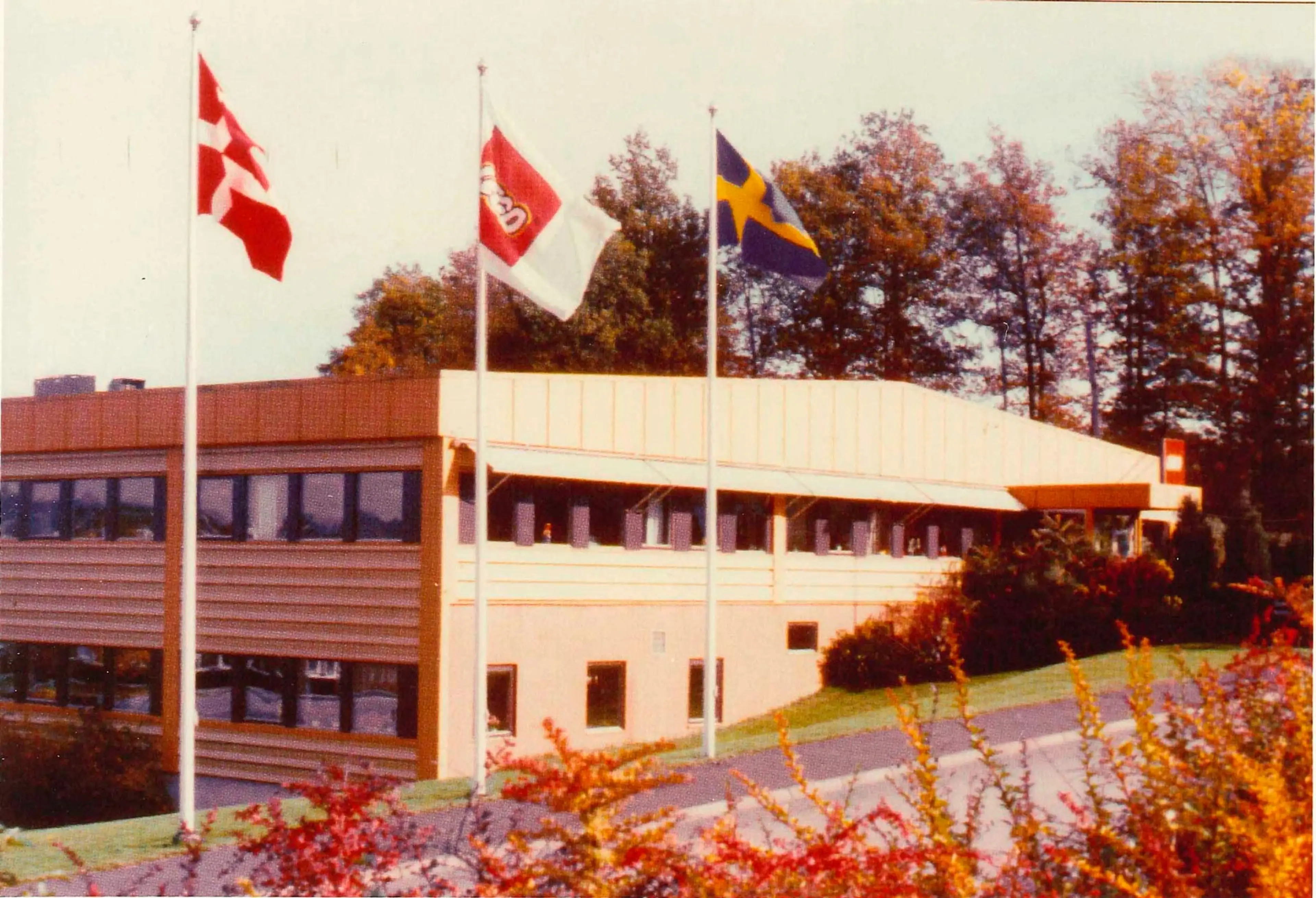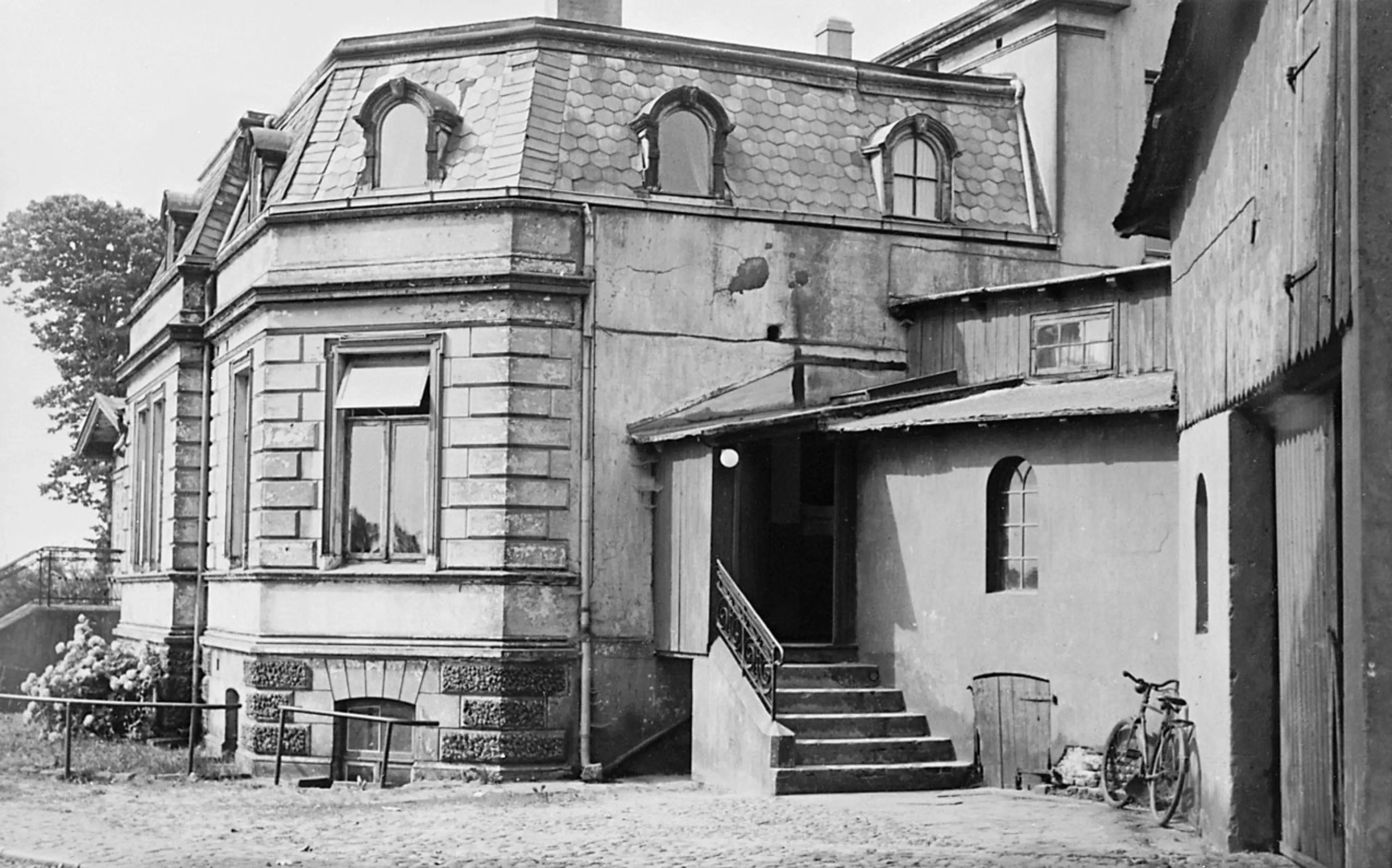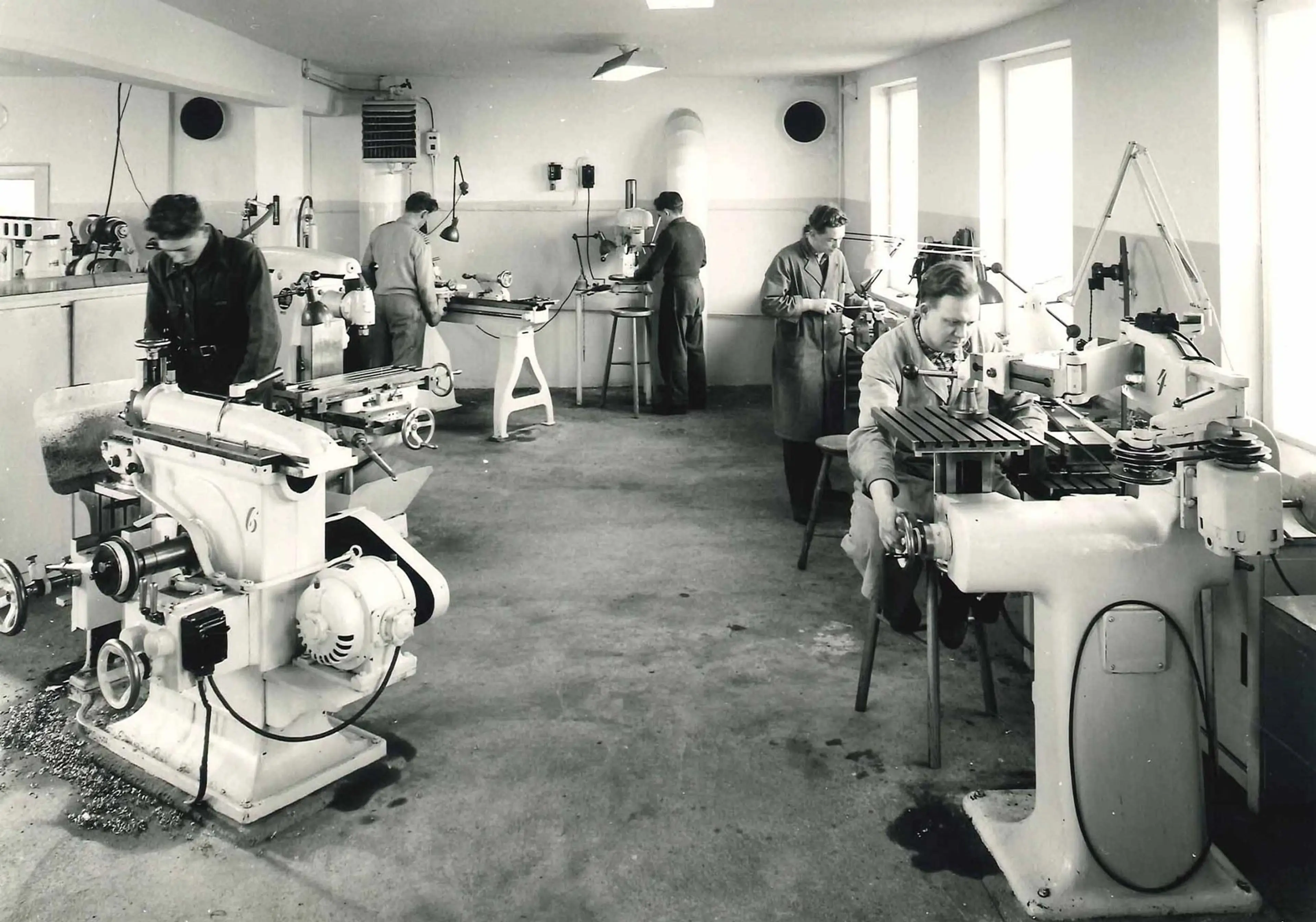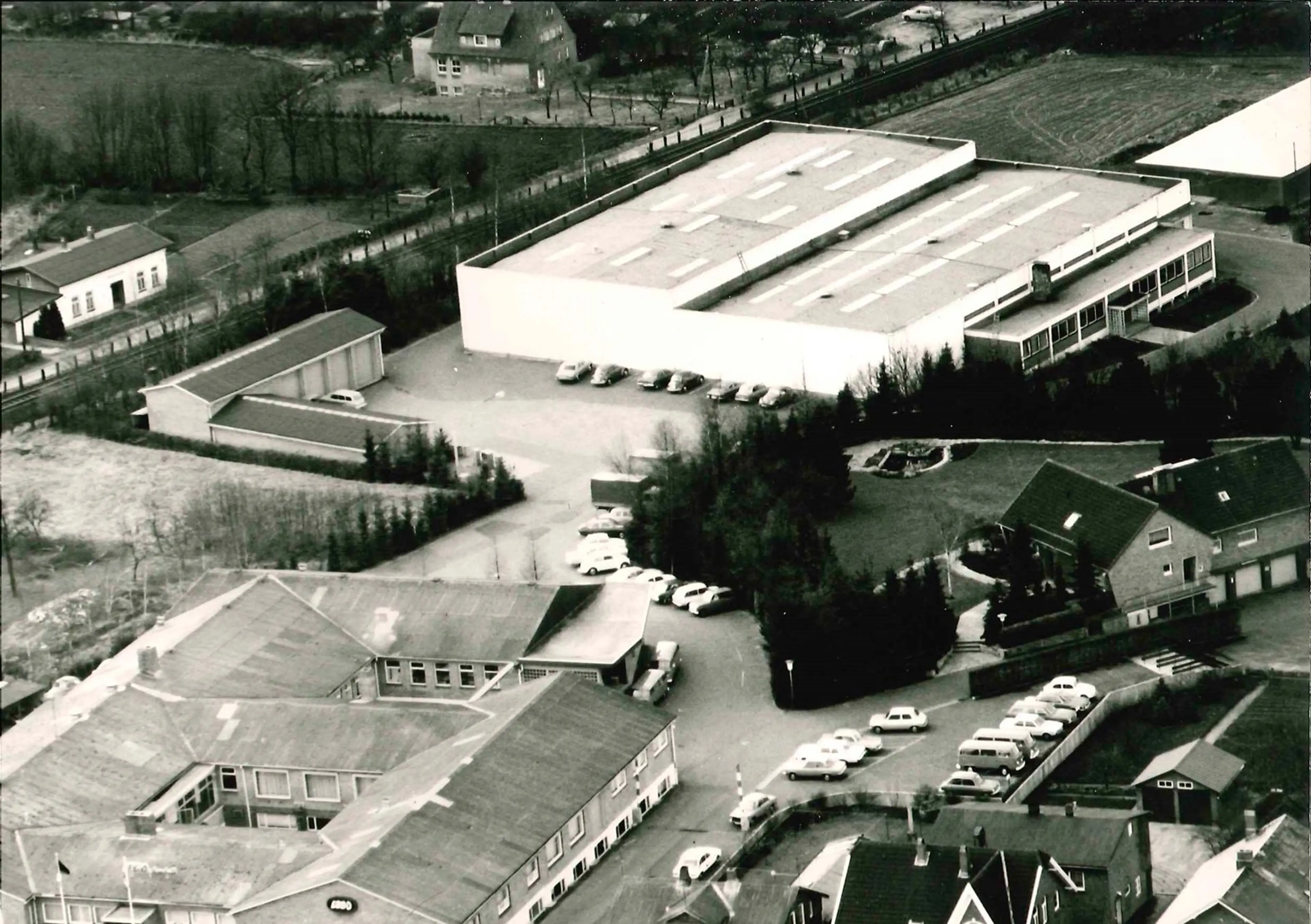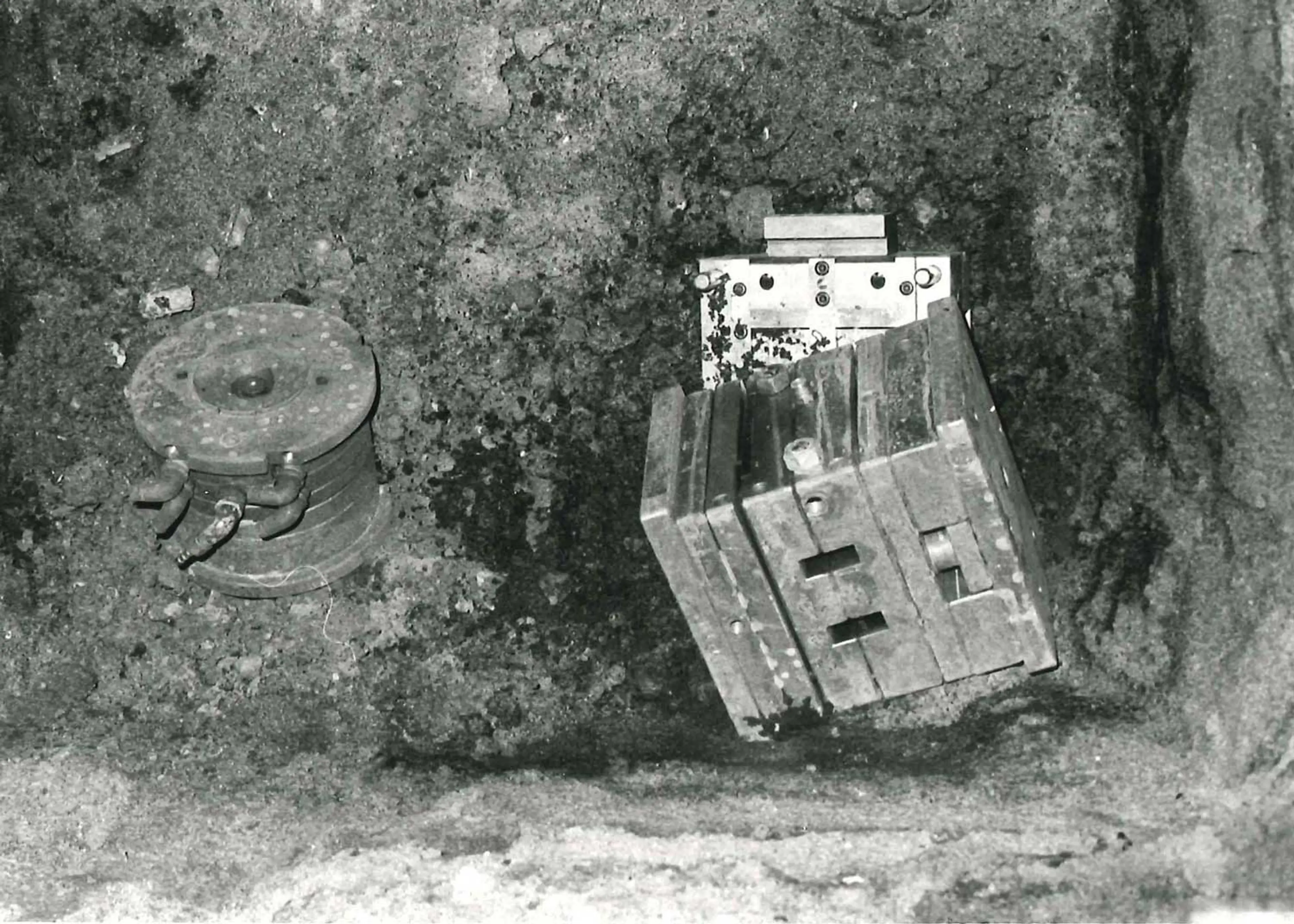“Our idea has been to create a toy that has value for life – a toy that appeals to the child's imagination and develops the creative urge and joy of creation that are the driving force in every human being.” This quote by second-generation LEGO owner Godtfred Kirk Christiansen concerning the LEGO System in Play is from 1955. It very much resembles the rhetoric we use today to describe who we are and what our purpose is. Of course, this is by no means a coincidence. The LEGO System in Play is one of the cornerstones of the LEGO Group and the process of developing this groundbreaking idea helped the company obtaining a clearer direction and to get a better sense of our identity.
Challenge accepted
In 1954, Godtfred Kirk Christiansen visits a toy exhibition in Britain. During the trip he meets Troels Petersen, recently appointed purchasing manager for Magasin du Nord’s toy department in Copenhagen. The two talk about the toy business. “What an industry this is – no system of any kind whatsoever!” is the purchasing manager’s complaint. The words send Godtfred Kirk Christiansen’s mind racing, and as a toy manufacturer, he takes up the challenge: How to bring system to the world of play.
Godtfred Kirk Christiansen makes a critical appraisal of the company's total product range. Every item in both plastic and wood, more than 200 products, are carefully assessed. Only LEGO bricks fire his imagination…
Over the next several months, Godtfred Kirk Christian devotes time and effort into shaping an idea, which can bring the necessary system to the toy industry. Children should not have to simply accept the existing “cut and dried” solutions. They need something else, something more – something to challenge their imagination and creativity.
The LEGO brick – simple pieces of plastic – are not particularly eye-catching individually, but in a child’s imagination they can become anything and everything – again and again.
.jpg?width=3840&quality=68&auto=webp&format=webply)
Godtfred Kirk Christiansen was the main architect behind the LEGO System in Play
The System explained
What exactly do we mean by LEGO System in Play? Allow LEGO employee Axel Thomsen to explain:
The LEGO System means that: all elements fit together, can be used in multiple ways, can be built together. This means that bricks bought years ago will fit perfectly with bricks bought in the future… It means that a LEGO element not only has instant value, but will keep its value always… We will always make sure that all bricks – from yesterday, today and tomorrow – fit together.
Launching LEGO System in Play
After a period of concentrated development, the first system product “LEGO System in Play” with Town Plan no. 1, is launched in 1955. The Town Plan range is designed to create a more realistic urban environment. A relevant play theme at a time when motoring is on the increase and children must learn to navigate in traffic.
Godtfred Kirk Christiansen’s thoughts on developing a System in Play are crystallized in six points, which are distributed to retailers to make sure they grasp the idea from the outset:
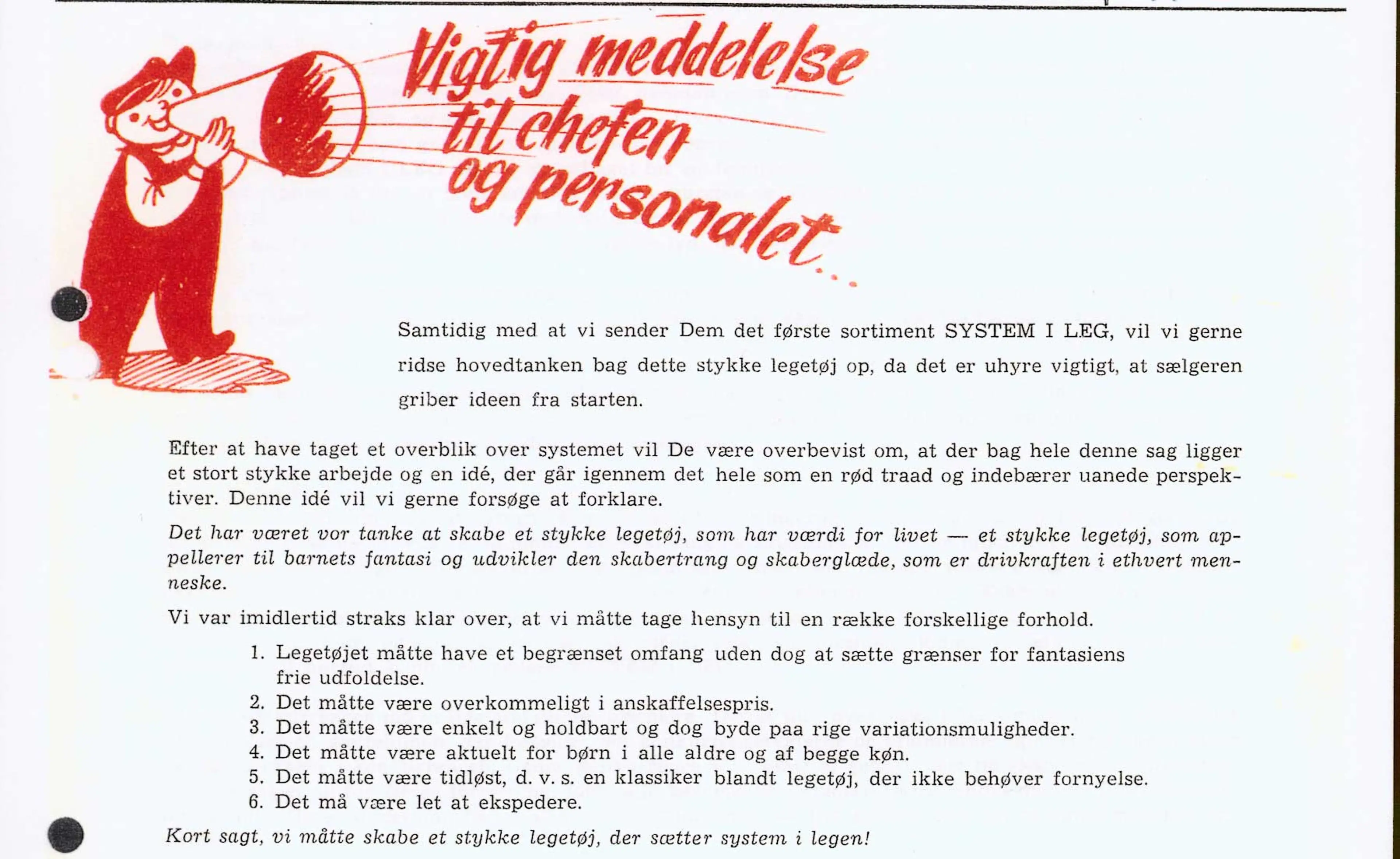
- The toy has to be compact in its dimensions without limiting the free expression of imagination.
- It has to be reasonably priced.
- It has to be simple and durable and yet offer unlimited variety.
- It has to be suitable for children of all ages and for both boys and girls.
- It has to be classic in its presentation, i.e. a classic among toys, needing no renewal.
- It has to be easily distributed.
This sales strategy is unusual in the 1950s. Furthermore, The LEGO Group has thought through and planned the necessary promotional steps: the accompanying town plan – in itself a promotional tool, useful sales arguments, and a prize competition designed to attract children into the stores. This is a brand new approach for its time.
LEGO System in Play becomes the core
The LEGO System in Play plays an important part in the success of the LEGO brick. It is with the introduction of the system idea that the unlimited potential of the brick starts to present itself. After the introduction of the Town Plan in 1955, both sales and the company's awareness of the potential of the brick increase. This is certainly not to say that the LEGO Group did not pay attention to the brick before; it is simply taken to a new level. The LEGO System in Play and the equally important stud and tube principle introduced in 1958 are the key reasons for the decision made in 1960 to stop the production of our wooden toys alongside the other plastic toys. This new core focus on the LEGO brick and the System in Play sends the LEGO Group on the trajectory we are still on today.
